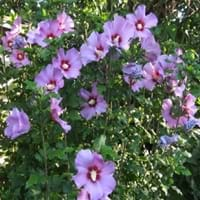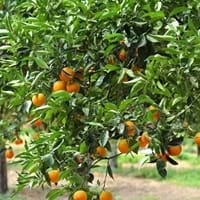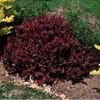Life Span
Perennial
Perennial
Origin
Australia
Southern Asia, India, Melanesia, Australia
Types
Not available
oranges, grapefruit, lemons
Habitat
subtropical regions, Temperate Regions, Tropical regions, Warmer regions
agricultural areas
USDA Hardiness Zone
9-11
Not Available
AHS Heat Zone
12-1
Not Available
Sunset Zone
H1, H2, 13, 14, 15, 16, 17, 20, 21, 22, 23, 24
Not Available
Habit
Upright/Erect
Oval or Rounded
Minimum Height
Not Available
Flower Color
Blue, Purple, Blue Violet
White, Purple, Ivory
Flower Color Modifier
Not Available
Bicolor
Fruit Color
Not Available
Yellow, Red, Green, Orange
Leaf Color in Spring
Dark Green
Green, Dark Green
Leaf Color in Summer
Dark Green
Green, Dark Green
Leaf Color in Fall
Dark Green
Green, Dark Green
Leaf Color in Winter
Dark Green
Light Green
Leaf Shape
Irregular
Toothed
Plant Season
Spring, Summer, Fall, Winter
Spring, Summer, Fall, Winter
Sunlight
Full Sun
Full Sun, Partial Sun
Growth Rate
Medium
Medium
Type of Soil
Clay, Loam, Sand
Clay, Loam, Sand
The pH of Soil
Acidic, Neutral, Alkaline
Acidic, Neutral, Alkaline
Soil Drainage
Well drained
Well drained
Bloom Time
Indeterminate
Not Available
Repeat Bloomer
Yes
Not Available
Tolerances
Not Available
Drought
Where to Plant?
Ground, Pot
Ground
How to Plant?
Seedlings, Semi-hardwood cuttings
Seedlings, Stem Planting
Plant Maintenance
Medium
Medium
Watering Requirements
Average Water Needs, Do Not over Water, Requires regular watering
Keep ground moist
In Summer
Lots of watering
Lots of watering
In Spring
Moderate
Moderate
In Winter
Average Water
Average Water
Soil pH
Acidic, Neutral, Alkaline
Acidic, Neutral, Alkaline
Soil Type
Clay, Loam, Sand
Clay, Loam, Sand
Soil Drainage Capacity
Well drained
Well drained
Sun Exposure
Full Sun
Full Sun, Partial Sun
Pruning
Remove damaged leaves, Remove dead branches, Remove dead leaves
Remove damaged leaves, Remove dead branches, Remove dead leaves
Fertilizers
All-Purpose Liquid Fertilizer
All-Purpose Liquid Fertilizer
Pests and Diseases
Red blotch, Rust aphids
Red blotch
Plant Tolerance
Not Available
Drought
Flower Petal Number
Single
Single
Fragrant Bark/Stem
No
Yes
Foliage Texture
Medium
Medium
Foliage Sheen
Matte
Glossy
Attracts
Butterflies, Flying insects, Hummingbirds, Insects
Birds, Butterflies
Allergy
Not Available
Itchiness, Oral Allergy
Aesthetic Uses
Borders, Showy Purposes, small hedge
Not Available
Beauty Benefits
Not Available
Good for skin and hair, Makes teeth white, Skin cleanser
Environmental Uses
Air purification
Air purification
Medicinal Uses
High blood pressure, lowering blood pressure
Kidney Stones, scurvy, Stomach Cancer
Part of Plant Used
Flowers, Leaves
Flowers, Fruits, Leaves
Other Uses
Decoration Purposes
Not Available
Used As Indoor Plant
Yes
Yes
Used As Outdoor Plant
Yes
Yes
Garden Design
Container, Feature Plant, Hedges, Mixed Border, Rock Garden, Wall
Container, Edible, Feature Plant, Fruit / Fruit Tree, Houseplant, Shade Trees, Topiary / Bonsai / Espalier, Tropical
Botanical Name
ALYOGYNE huegelii 'Monle'
CITRUS
Common Name
Blue Hibiscus, Purple Delight Blue Hibiscus
Citrus
In Hindi
Blue Hibiscus
निम्बू-वंश
In German
Blauer Hibiskus Baum
Zitruspflanzen
In French
Bleu Hibiscus Arbre
Citrus
In Spanish
Azul árbol del hibisco
Citrus
In Greek
Μπλε Hibiscus Tree
Citrus
In Portuguese
Árvore azul do hibiscus
Citrus é um género
In Polish
Niebieski Hibiscus Drzewo
Cytrus
In Latin
Hibiscus lignum blue
citrus
Phylum
Magnoliophyta
Magnoliophyta
Class
Magnoliopsida
Magnoliopsida
Order
Malvales
Sapindales
Family
Malvaceae
Rutaceae
Clade
Angiosperms, Eudicots, Rosids
Angiosperms, Eudicots, Rosids
Subfamily
Malvoideae
Asteroideae
Number of Species
Not Available
Season and Care of Blue Hibiscus and Citrus
Season and care of Blue Hibiscus and Citrus is important to know. While considering everything about Blue Hibiscus and Citrus Care, growing season is an essential factor. Blue Hibiscus season is Spring, Summer, Fall and Winter and Citrus season is Spring, Summer, Fall and Winter. The type of soil for Blue Hibiscus is Clay, Loam, Sand and for Citrus is Clay, Loam, Sand while the PH of soil for Blue Hibiscus is Acidic, Neutral, Alkaline and for Citrus is Acidic, Neutral, Alkaline.
Blue Hibiscus and Citrus Physical Information
Blue Hibiscus and Citrus physical information is very important for comparison. Blue Hibiscus height is 120.00 cm and width 120.00 cm whereas Citrus height is Not Available and width 244.00 cm. The color specification of Blue Hibiscus and Citrus are as follows:
Blue Hibiscus flower color: Blue, Purple and Blue Violet
Blue Hibiscus leaf color: Dark Green
Citrus flower color: White, Purple and Ivory
- Citrus leaf color: Green and Dark Green
Care of Blue Hibiscus and Citrus
Care of Blue Hibiscus and Citrus include pruning, fertilizers, watering etc. Blue Hibiscus pruning is done Remove damaged leaves, Remove dead branches and Remove dead leaves and Citrus pruning is done Remove damaged leaves, Remove dead branches and Remove dead leaves. In summer Blue Hibiscus needs Lots of watering and in winter, it needs Average Water. Whereas, in summer Citrus needs Lots of watering and in winter, it needs Average Water.





